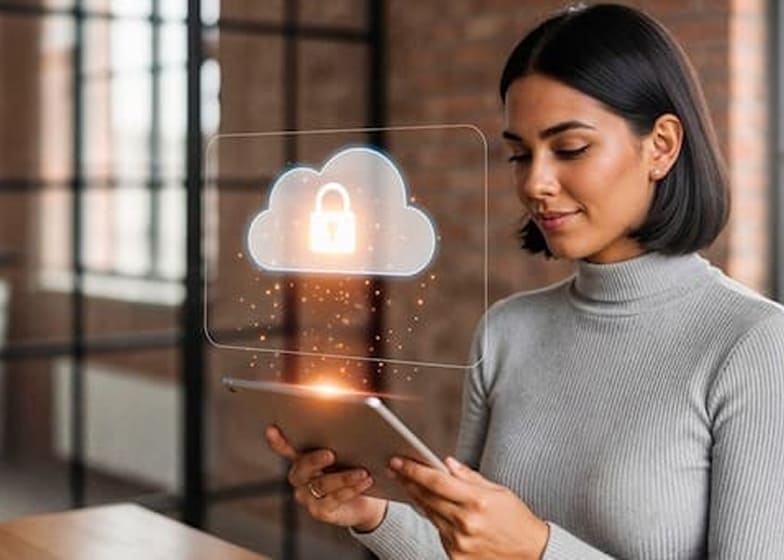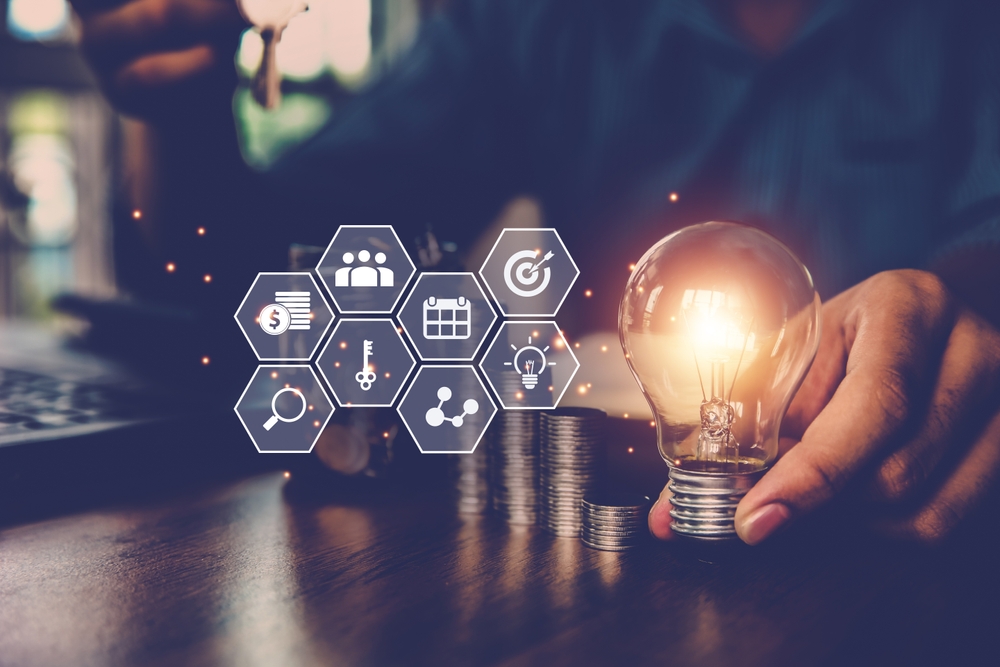In today’s digital era, cybersecurity has become a critical concern for both individuals and organizations. With increasing reliance on the internet, cloud services, and connected devices, the risk of cyberattacks—including phishing, malware, ransomware, and data breaches—has grown significantly. Cybersecurity best practices are essential to protect sensitive information, maintain privacy, and ensure the smooth operation of business processes. For individuals, this includes measures like using strong passwords, enabling two-factor authentication, regularly updating software, and being cautious with email links and downloads.
For businesses, cybersecurity best practices extend beyond basic precautions. Organizations must implement robust security frameworks, conduct regular security audits, and ensure that employees are trained to recognize and respond to threats. Network security measures such as firewalls, intrusion detection systems, and endpoint protection are crucial to prevent unauthorized access. Additionally, maintaining secure cloud practices and encrypting sensitive data help safeguard against cyberattacks and regulatory penalties.
Regular monitoring and incident response planning are also key aspects of effective cybersecurity. Businesses should establish protocols for identifying threats, responding promptly to breaches, and recovering critical systems and data. Individuals should stay informed about emerging threats and adopt proactive measures, such as using secure Wi-Fi networks and updating devices to patch vulnerabilities. These strategies reduce the risk of financial loss, reputational damage, and legal consequences.
Ultimately, adopting comprehensive cybersecurity best practices fosters trust, protects assets, and ensures long-term resilience in an increasingly connected world. By combining technology, education, and vigilant monitoring, both individuals and businesses can safeguard themselves against evolving cyber threats and leverage digital tools with confidence.
What is Cybersecurity?
Cybersecurity refers to the practice of protecting computers, servers, networks, devices, and data from unauthorized access, attacks, damage, or theft. It encompasses a wide range of technologies, processes, and practices designed to safeguard digital assets and ensure the confidentiality, integrity, and availability of information. Cybersecurity is essential in an increasingly connected world, where cyberattacks such as malware, ransomware, phishing, and data breaches can cause financial losses, reputational damage, and legal consequences.
At its core, cybersecurity involves identifying potential threats, implementing protective measures, monitoring systems for suspicious activity, and responding quickly to incidents. It applies to individuals, businesses, and governments alike, protecting everything from personal emails and online accounts to critical infrastructure and corporate data. By investing in cybersecurity, organizations and individuals can reduce risks, maintain trust, and safely leverage digital technologies for work, communication, and innovation.
Cybersecurity Best Practices for Individuals
Use Strong and Unique Passwords
Using complex passwords that combine uppercase, lowercase, numbers, and special characters significantly reduces the risk of account hacking. Avoid using the same password across multiple platforms to prevent a single breach from compromising multiple accounts. Tools like password managers make it easy to generate and store strong, unique passwords.
Prevents unauthorized access to banking, investment, or online payment accounts, potentially saving $1,000–$10,000/year from theft or fraud.
Enable Two-Factor Authentication (2FA)
Two-factor authentication adds a second verification step, such as a one-time code sent to your mobile device, in addition to your password. This makes it extremely difficult for attackers to access accounts even if your password is stolen.
Protects financial assets, cryptocurrency wallets, and subscription services from fraud, avoiding potential losses of $5,000/year or more.
Keep Software and Devices Updated
Operating system and application updates often include security patches that fix vulnerabilities exploited by hackers. Regular updates prevent malware, ransomware, and spyware attacks that can compromise sensitive information.
Avoids financial costs from ransomware payments, device repair, or data recovery, which can range from $500–$20,000 per incident.
Be Cautious with Emails and Links
Phishing attacks trick users into revealing passwords or personal information by using fake emails or links. Always verify email senders, hover over links to check URLs, and avoid downloading unknown attachments.
Reduces the risk of bank account fraud, credit card theft, and identity theft, saving potential losses of $1,000–$15,000/year.
Secure Your Wi-Fi Network
Using strong passwords, enabling encryption (WPA2/WPA3), and hiding your network SSID secures your home or office network from hackers. Avoid public Wi-Fi for sensitive transactions unless using a trusted VPN.
Protects personal financial data and online accounts from interception, potentially saving $500–$5,000/year in fraudulent activity.
Use Antivirus and Anti-Malware Tools
Antivirus software scans your system for malicious files, detects potential threats, and removes them before damage occurs. Keeping these tools updated ensures protection against new and evolving threats.
Prevents ransomware attacks and system downtime, protecting personal and freelance earnings worth $1,000–$10,000/year.
Backup Important Data Regularly
Regular backups to external drives or secure cloud services ensure data recovery in case of accidental deletion, hardware failure, or malware attacks. Encrypt backups for added security.
Avoids financial and productivity losses from lost documents, financial records, or creative work, potentially saving $1,000–$50,000.
Be Mindful of Personal Information Sharing
Avoid oversharing personal information like full addresses, phone numbers, or financial details online. Adjust privacy settings on social media and other platforms to limit exposure.
Prevents identity theft, fraudulent loans, and account takeovers, which could otherwise cost $5,000–$25,000 in damages.
Educate Yourself About Cyber Threats
Stay informed about emerging threats, scams, and cybersecurity best practices. Awareness helps you recognize suspicious activity early and take preventive action.
Reduces potential financial losses and protects your online reputation, safeguarding earning potential and investments, estimated at $1,000–$20,000/year.
Cybersecurity Best Practices for Businesses
Implement Strong Access Controls
Ensure employees have access only to the data and systems necessary for their role. Use role-based access control (RBAC) and enforce strong password policies across the organization.Reduces the risk of insider threats or unauthorized access, potentially preventing losses of $50K–$500K/year depending on business size and data sensitivity.
Regular Security Training for Employees
Conduct regular cybersecurity awareness sessions to educate employees about phishing, social engineering, and safe online practices. Human error is a leading cause of breaches.Prevents costly security incidents caused by employee mistakes, saving businesses $20K–$200K/year in potential damages.
Use Firewalls and Endpoint Protection
Firewalls monitor network traffic to block malicious activity, while endpoint protection secures all connected devices. This is crucial for hybrid work environments.Prevents malware, ransomware, and data breaches, protecting potential revenue and assets valued at $100K–$1M/year for medium to large businesses.
Encrypt Sensitive Data
Encryption protects data at rest and in transit, making it unreadable to unauthorized users. This is critical for customer information, financial records, and intellectual property.Avoids fines and losses due to data breaches, especially in regulated industries like healthcare or finance, potentially saving $50K–$500K/year.
Regular Software and System Updates
Keep all systems, applications, and cloud platforms updated to patch vulnerabilities. Automate updates where possible to maintain consistent security.Reduces the risk of costly exploits and ransomware attacks, potentially saving $50K–$250K/year in lost productivity and IT recovery costs.
Backup and Disaster Recovery Planning
Regularly backup critical business data and test disaster recovery protocols. This ensures minimal downtime in case of attacks or system failures.Avoids operational losses and reputational damage, protecting potential revenue of $100K–$1M/year, depending on business scale.
Monitor Networks and Systems Continuously
Use intrusion detection systems (IDS), security information and event management (SIEM), and regular audits to identify and respond to threats proactively.Early detection prevents financial losses and business disruption, potentially saving $50K–$500K/year.
Secure Cloud and Remote Work Environments
Enforce secure cloud usage, VPNs, and endpoint security for remote employees. Ensure all third-party services comply with security standards.Protects sensitive company data from breaches, securing potential profits and customer trust valued at $50K–$300K/year.
Develop an Incident Response Plan
Establish clear protocols for responding to cybersecurity incidents, including communication, containment, and recovery. Test the plan regularly.Minimizes financial losses and downtime during cyberattacks, potentially saving $100K–$1M/year depending on incident severity.
Regular Compliance and Risk Assessments
Ensure adherence to industry regulations such as GDPR, HIPAA, or PCI-DSS. Conduct regular risk assessments to identify vulnerabilities and prioritize mitigation.Avoids fines, lawsuits, and reputational damage, potentially saving $50K–$500K/year in regulatory penalties.
Tools and Technologies
- Antivirus/Anti-Malware (Norton, McAfee, Bitdefender) : Protects devices from viruses and malware.
- Firewalls (pfSense, Cisco ASA, Fortinet) :Blocks unauthorized network access.
- VPNs (NordVPN, ExpressVPN, CyberGhost) :Secures internet connections and privacy.
- IDS/IPS (Snort, Suricata, SolarWinds) : Detects and blocks suspicious network activity.
- SIEM (Splunk, IBM QRadar, LogRhythm) : Monitors and analyzes security events.
- Encryption Tools (VeraCrypt, BitLocker, OpenSSL) : Secures data by converting it into unreadable formats.
- Password Managers (LastPass, 1Password, Dashlane) : Stores and generates strong passwords.
- EDR – Endpoint Detection & Response (CrowdStrike, SentinelOne, Carbon Black) : Protects endpoints from threats.
- Cloud Security Tools (Palo Alto Prisma Cloud, Microsoft Cloud App Security, AWS Security Hub) : Secures cloud data and services.
- Backup & Disaster Recovery (Acronis, Veeam, Carbonite) : Ensures data recovery after attacks or failures.
















